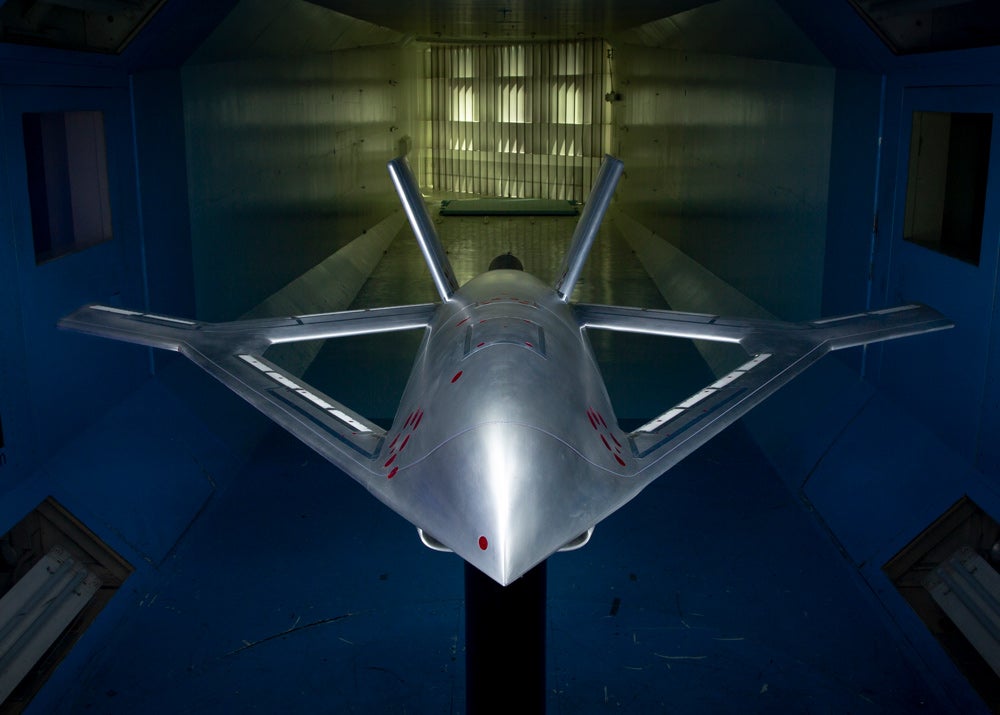DARPA CRANE Program Contract for Active Flow Controlled X-Plane Awarded to Boeing’s Aurora Flight Sciences
DARPA announced on January 17 that it has selected Aurora Flight Sciences, a Boeing Company, to move into the detailed design phase of the Control of Revolutionary Aircraft with Novel Effectors (CRANE) program. The program aims to design, build and flight test a novel X-plane without traditional moving flight controls on the exterior of the wings and tail. Instead the X-plane incorporates Active Flow Control (AFC) as a primary design consideration.
AFC could improve aircraft performance by removing jointed surfaces, which currently drive design configurations that increase weight and mechanical complexity. Other potential improvements include drag reduction and high angle of attack flight, thicker wings for structural efficiency and increased fuel capacity as well as simplified high-lift systems.
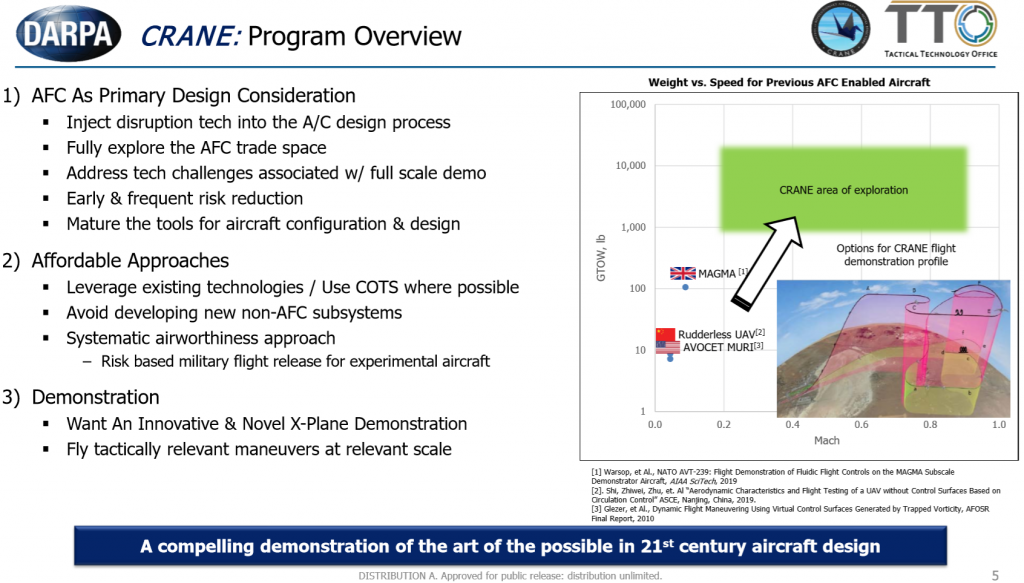
The contract follows successful completion of the project’s Phase 1 preliminary design, which resulted in an innovative testbed aircraft that used AFC to generate control forces in a wind tunnel test. Phase 2 will focus on detailed design and development of flight software and controls, culminating in a critical design review of an X-plane demonstrator. The contract includes an executable Phase 3 option to build and fly a 7,000-pound unmanned prototype.
In response to queries by Overt Defence, a DARPA spokesperson stated that Phase 2 is expected to be completed in December 2023 and that Phase 3 flight testing is planned for 2025. While refusing to share specifications of the planned Phase 3 prototype, the spokesperson stated that the wind tunnel testing completed in Phase 1 was a part of multiple risk reduction activities for the X-Plane being developed to fly in Phase 3 of the CRANE program.
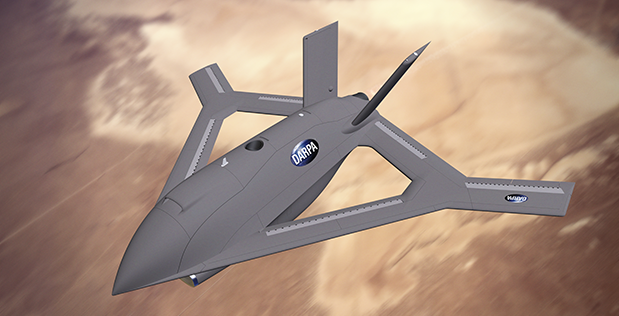
Aurora Flight Sciences had announced the award of the contract through a press release on December 17, 2022. Aurora’s X-plane candidate uses AFC for flight control at tactical speeds and performance enhancement across the flight envelope. The AFC system supplies pressurized air to AFC effectors embedded in all flying surfaces.
The vehicle configuration provides AFC testing for multiple wing sweeps using nozzle arrays located at the upper surface of each wing. The aircraft is configured to be a modular testbed featuring replaceable outboard wings and swappable AFC effectors which allows testing of other AFC effector designs. CRANE Program Manager Richard Wlezien explained:
“Over the past several decades, the active flow control community has made significant advancements that enable the integration of active flow control technologies into advanced aircraft. We are confident about completing the design and flight test of a demonstration aircraft with AFC as the primary design consideration. With a modular wing section and modular AFC effectors, the CRANE X-plane has the potential to live on as a national test asset long after the CRANE program has concluded.”
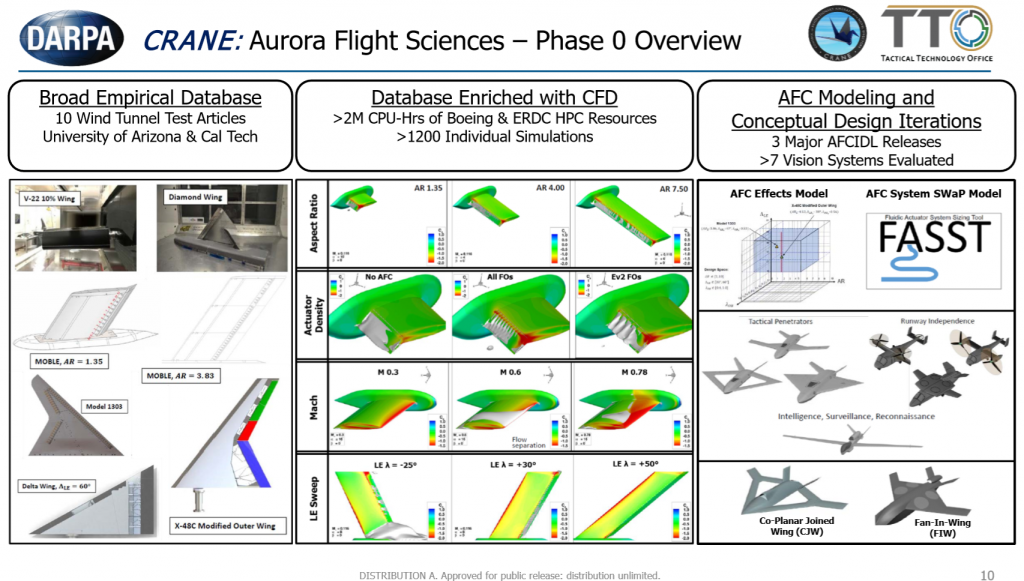
Aurora had developed two X-plane concept designs during Phase 0. In Phase 1, Aurora completed preliminary design of the selected Co-Planar Joined Wing design and conducted wind tunnel testing. The wind tunnel tests collected data that provided the foundation for developing flight control laws using AFC as a primary control effector. An Aurora Flight Sciences press release from May, 2022, notes:
“Using a 25% scale model, Aurora conducted tests over four weeks at a wind tunnel facility in San Diego, California. In addition to 11 movable conventional control surfaces, the model featured 14 AFC banks with eight fully independent controllable AFC air supply channels. Over 14,000 data points were collected, including 8,860 AFC control power points, forming the foundation for a flight-quality aerodynamic database to enable rapid execution in future program phases.”
Aurora has begun the detailed engineering design of its full-scale, 30 foot wingspan, 7000 lbs gross weight, uncrewed X-plane as part of Phase 2. In Phase 3, Aurora would build the X-plane at its facilities in Virginia, West Virginia, and Mississippi. The X-plane would have flight speeds up to Mach 0.7. The DARPA spokesperson confirmed to Overt Defense that the program does not intend to demonstrate AFC in supersonic flight regimes in any phase.
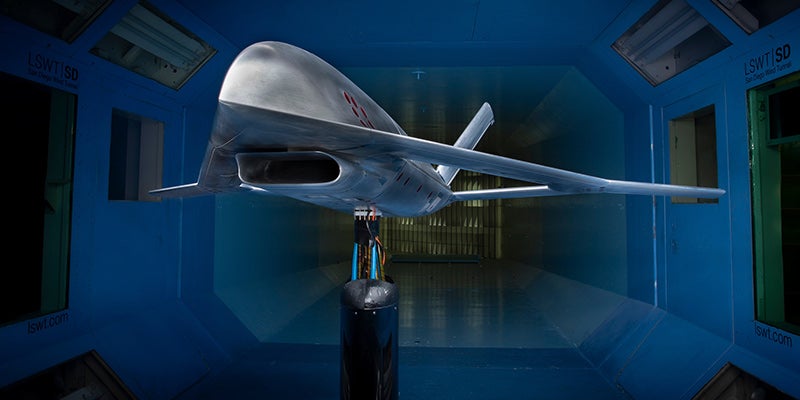
Aurora was among the four firms participating in the earlier phases, with the others being Lockheed Martin, Georgia Tech Research Corporation (GTRC) and BAE Systems. In May 2019, BAE Systems had announced a historic flight of its MAGMA aircraft which was manoeuvred in flight using supersonic blown air alone. MAGMA was designed and developed by the University of Manchester in collaboration with BAE Systems.
MAGMA had demonstrated Wing Circulation Control in which supersonic air taken from the aircraft engine was blown through narrow slots around a specially shaped wing tailing edge in order to control the aircraft. Fluidic Thrust Vectoring was the other key technology demonstrated using which the aircraft was controlled by blowing air jets inside the nozzle to deflect the exhaust jet and generate a control force.
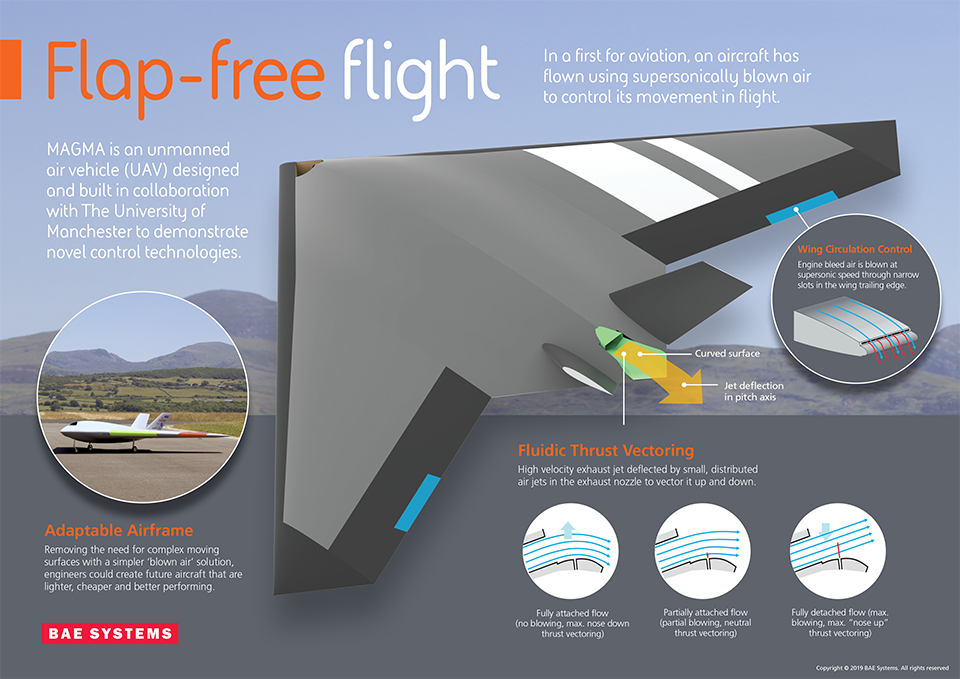
These AFC advancements “could be applied to the development of a Future Combat Air System,” BAE had stated. MAGMA is the latest of BAE’s efforts in developing AFC.
Efforts to develop AFC technologies are ongoing in China as well as India. In India, Boeing has funded fundamental research projects in CSIR-NAL to advance fluidic oscillators. DRDO and IIT Kanpur are also conducting research on AFC which could find applications in future aircraft developed by India.
Cover Image: DARPA X-plane (Aurora Flight Sciences)

